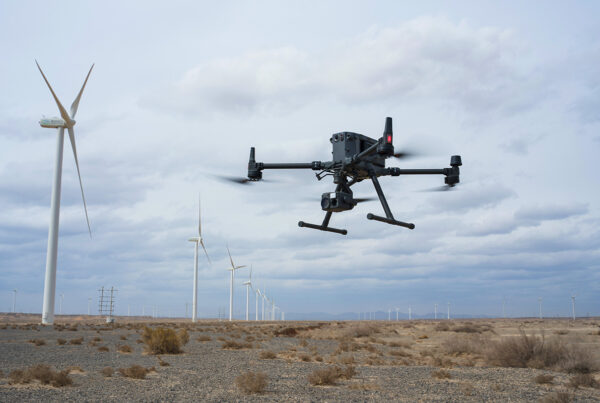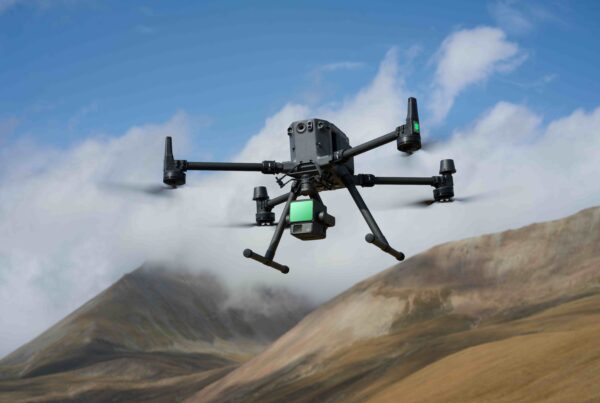By now, you’re probably familiar with the concept of drones. Their uses are varied, and they come in a wide assortment of configurations.
If you’re a budding drone enthusiast, you’ve likely wondered when, how, and where you can fly drones. Today, we’re going to discuss the ins and outs of flying drones at night, and what a responsible drone pilot should know.
Let’s dive in.
Can you fly a Drone at Night?
The answer to this question is a bit complex. As it stands right now, the Federal Aviation Administration (FAA, for short) is considering developing legislation that allows drone operators to fly their aircraft at night.
These proposed new rules would allow pilots to fly drones at night, and without completing or meeting the current additional requirements. These regulations are meant to weave drones into the airspace system on a national level.
According to U.S. Department of Transportation Secretary Elaine L. Chao:
“Current FAA regulations do not permit small drones to fly at night without a waiver. The proposed rule allows drones to fly at night without a waiver, if the operator has received appropriate training, completed approved testing, and if the drone is equipped with anti-collision lighting. Also, current FAA regulations prohibit drone flights over people. The proposed rule would allow drones to make routine flights over people without a waiver or an exemption under certain conditions. These conditions depend upon the level of risk to people on the ground, and are spelled out clearly in the proposal.”
Right now, the FAA is seeking public input to identify potential drone security and safety issues with regards to drones flying at night. Drone flight in an already congested airspace can create additional risks to aircraft, structures, or – worse yet – people. The pilot project currently underway is slated to run until September 2019.
Waivers
Under current legislation, drone operators need an approved FAA waiver to fly their aircrafts at night. For more information, here’s a breakdown from the FAA on what types of flights require waivers, and which do not:

3 Steps to Obtain a Night Waiver
Obtaining a waiver from the FAA may sound difficult, but it’s not as complicated as you might believe. Here are the steps:
1. Decide Which Waiver you Need
Request the appropriate waiver to meet your mission requirements. Here is a selection of documents and webinars that will help you identify which type of waiver you need:
- Waiver Application Instructions
- Waiver Safety Explanation Guidelines
- “Just the Facts:” A webinar about how to fill out the waiver application form
2. Log into the FAA’s DroneZone
This portal allows you to apply for a waiver. Create an account or log into your current account. Select “Fly an sUAS under Part 107.” Input the make and model information for your drone and bypass the payment forms. Submit the application and supporting documents.
3. Wait for Your Decision
The FAA will then approve or disapprove your waiver request. Processing times will vary, although they typically come within 90 days of submission.
As you wait, focus on gathering and organizing your documentation for proper presentation and storage. Once you get approval, be sure to keep documentation of that, as well. It’s essential for a UAV pilot to keep a copy of the approval docs ready in case an FAA officer were to arrive on the scene.
How to Plan for a Night Flight
If the FAA approves your waiver, you can begin planning your mission and how to execute it properly. Preparing your airframe and site for the task you are about to conduct are just a few of the initial steps. Some additional considerations are notifying surrounding businesses or residences of the mission and what they can expect.
Additional considerations are listed below.
Prepare the Drone
Before conducting your night operations, prepare your drone by performing a proper pre-flight inspection and completing your checklist. Each mission has its own requirements, but it is always a good idea to maintain the basics.
Be advised that drones destined for night flight must have a lighting system that meets the FAA requirements. If you need to update your lighting system to stay in compliance, check out our Lume Cube products, which we carry for virtually all professional and enterprise airframes.
Be sure, also, to pay attention to your drone’s unique night flight settings. Every drone is different, but yours may have specific settings that must be enabled for night flight.
Know the Area in Advance
Setting the stage for your mission is a critical step to ensuring success. Whether you have never flown in an area before or you have flown it several times, always inspect your flight area during daylight hours. Often, you’ll find small environmental changes that can impact or derail your mission. It is also a good practice to arrive at your flight location the same day to confirm and finalize details in the hours before your planned flight.
Flying Drones at Night With Drone Nerds
Here at Drone Nerds, we specialize in providing high-quality enterprise drones for roof inspections [INSERT LINK], search and rescue, and more. Once you get your night waiver, you’re all set to fly your drone at night. If you need additional tools or equipment, visit Drone Nerds today.





I’m sure you have heard about the drones flying at night in NE Colorado. Now they are in SW Nebraska. 12/30 they were spotted west and south of Imperial. It appears to be one stationary with more than 5 or 6 flying in a grid. My question is, do they have to file a flight plan? What are they doing? No one is talking or claiming to know anything.
What about flying the drone below house/tree line at night? Like literally lifting the drone up and then back down to get a unique photograph.
Hello michael,
You can fly low if you’d like, just be careful as wires are too thin for the sensors to detect and at night, it’s virtually impossible to see. Also, the sensors work around tree’s, but keep in mind there’s always space between the trees and their branches (how full the tree is, how large the leaves are, etc…) and can trick the drone into thinking its clear when in reality the branch is right there. Bottom line: line of sight, don’t depend solely on the sensors, line up the shot visually and then get it done. We hope this helps.
I made a Waypoint route with my Mavic 2 and tested several times during the day. That should be enough to ensure security during a night flight?